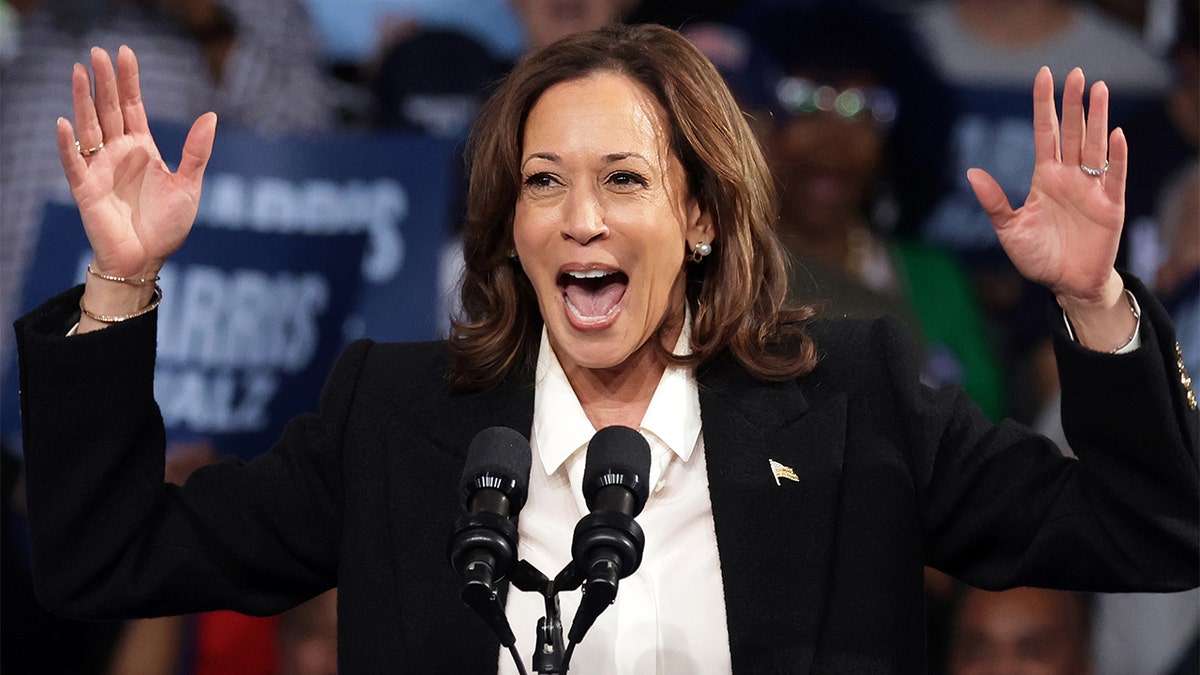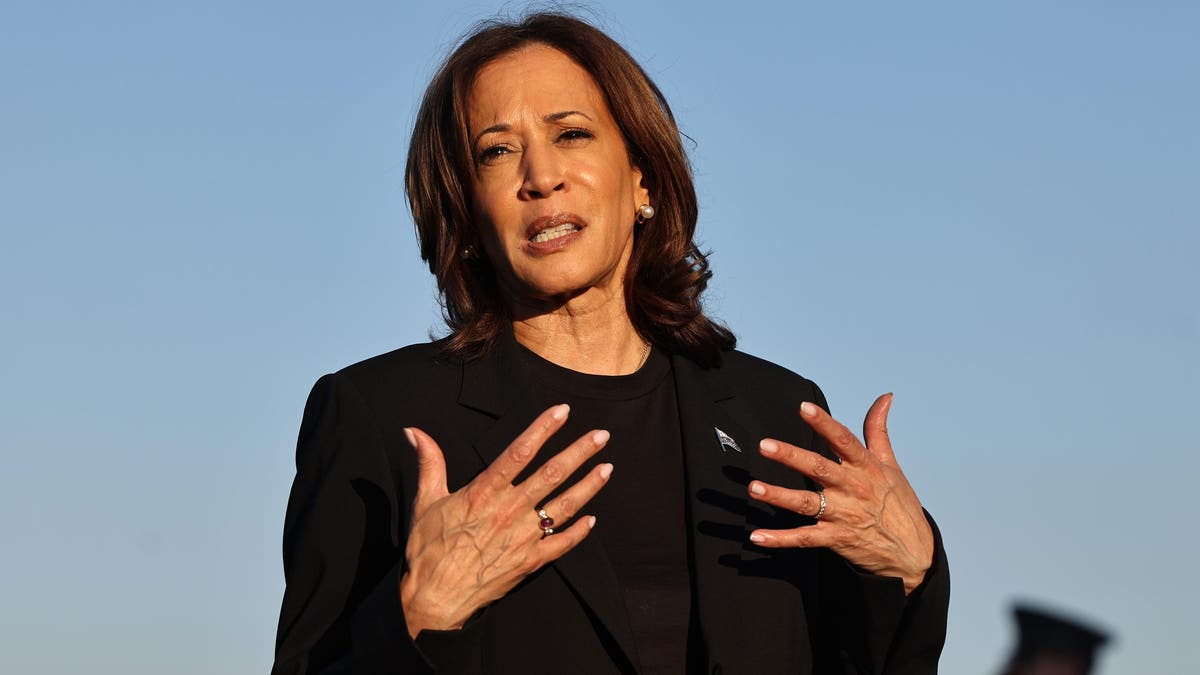
Vice President Kamala Harris, while serving as California’s attorney general, declined to intervene on behalf of efforts by local Native American tribes to protect a sacred burial site from being turned into a wind farm that critics labeled a green energy boondoggle.
California’s Native American Heritage Commission (NAHC) voted in 2013 to declare land used for the Ocotillo Express Wind Facility as a “sacred site” after hearing several hours of “emotional” testimony from local Native Americans who, according to East County Magazine, contended “that the U.S. Bureau of Land Management ignored their concerns and its duty to protect a clearly documented sacred site and cemetery in the fast-tracked approval process for the Ocotillo Express Wind Facility.”
Tribal leaders at the time described the Ocotillo wind project as “utter destruction,” “constructed on top of the graves of our ancestors,” and a “violation of trust.”
Local Native Americans argued that the wind facility was built on what is known as the “Valley of the Dead,” which they claimed for over 10,000 years as a site where ancestral remains were buried. While some tribes supported the wind farm, the NAHC voted 4-0 to ask Attorney General Harris to explore legal options.
VP HARRIS RIPPED BY VICTIM OF ILLEGAL IMMIGRANT RELEASED UNDER HER PROGRAM OVER RESURFACED SPEECH

Vice President and Democratic presidential candidate Kamala Harris sat down for an interview on the raunchy “Call Her Daddy” podcast earlier this week. (Brendan Smialowski/AFP via Getty Images)
“I really want to say, ‘Dismantle it and give the land back to the tribes’ . . . I’d like to ask the Attorney General to . . . give this commission more teeth so we could say, ‘Tear that wall down,’” NAHC Commissioner Marshall McKay said at the time.
Then-AG Harris did not step in to take legal action in favor of the activists, instead, Harris’ office “determined that the Native American Heritage Commission has no jurisdiction to bring action in the form of a lawsuit against a federal agency for a project situated on federal land.”
“Further, the Attorney General can no longer represent the Native American Heritage Commission on the Ocotillo Project due to a conflict of interest.”

Greenville, North Carolina – October 13: Democratic presidential nominee, Vice President Kamala Harris speaks during a campaign rally at the Williams Arena at Minges Coliseum (Alex Wong/Getty Images)
Local media described Harris’ actions as having “thwarted” the efforts of the tribes.
“Pattern Energy’s industrial wind facility was built atop lands known as ‘Valley of the Dead’ by Native American tribes for over 10,000 years,” East County Magazine wrote.
“The Viejas Band of Kumeyaay Indians also objected to the desecration of ancestral remains and persuaded the California Native American Heritage Commission (NAHC) that the state should take action on their behalf, but those efforts were thwarted by California Attorney General Kamala Harris.”
CLICK HERE TO GET THE FOX NEWS APP

Democratic presidential nominee Vice President Kamala Harris speaks to the media before boarding Air Force Two after assessing the Hurricane Helene recovery response in North Carolina on October 5, 2024. (Mario Tama/Getty Images)
The Ocotillo wind farm facility has had a litany of problems including safety issues and shut-downs. Those safety issues included equipment spraying oil across the sacred site, turbines catching fire, and one tower catastrophically losing a blade. In 2021, BLM temporarily shut down the plant after its second tower collapse in five years.
Questions have also been raised whether the wind farm facility has even delivered on its promised green energy benefits after it fell short of its capacity forecast three years in a row and prompting experts to wonder whether the need for the plant was simply “spin.”
“It was heartbreaking to see this project desecrate such a historically and culturally significant landscape, and it’s even worse when you find out that it was built on false claims by the developer, and with the assistance of the BLM. “Anthony Pico, Chairman, Viejas Band of Kumeyaay Indians, said, according to East County Magazine.
“Does economics trump justice in this country? I believe it does, and that profoundly saddens me,’ Pico told commissioners during the showdown. “I cannot understand, we cannot understand, how federal and state institutions who have trusted fiduciary responsibility to Native Americans, allowed the utter destruction of arguably the richest cultural resource in our country in Ocotillo Valley.’”
Fox News Digital reached out to the Harris-Walz campaign for comment.
“The Ocotillo Wind facility began operations 12 years ago after it was designated by the U.S. government as a critical resource for protecting the country’s energy security. The vital clean energy facility brought 370 jobs to Imperial County and provides enough clean electricity to provide power for 300,000 Americans each year without any emissions or water use,” a spokesperson for Pattern Energy told Fox News Digital. “Ocotillo Wind uses American-made wind turbines that generated more than $20 million in sales tax revenue for Imperial County and the state of California. Over the first 20 years of operations, Ocotillo Wind expects to generate more than $100 million for local taxing jurisdictions, with Imperial County, Imperial Valley College, and the Imperial Unified School District being significant beneficiaries.”
“The Ocotillo facility was carefully sited to not directly impact cultural resources while supporting America’s energy needs. During development, the company spent three years carefully planning, listening to the community and addressing feedback through numerous project revisions, which resulted in a final design that received the support of many local residents, officials and Native American Tribes.”








